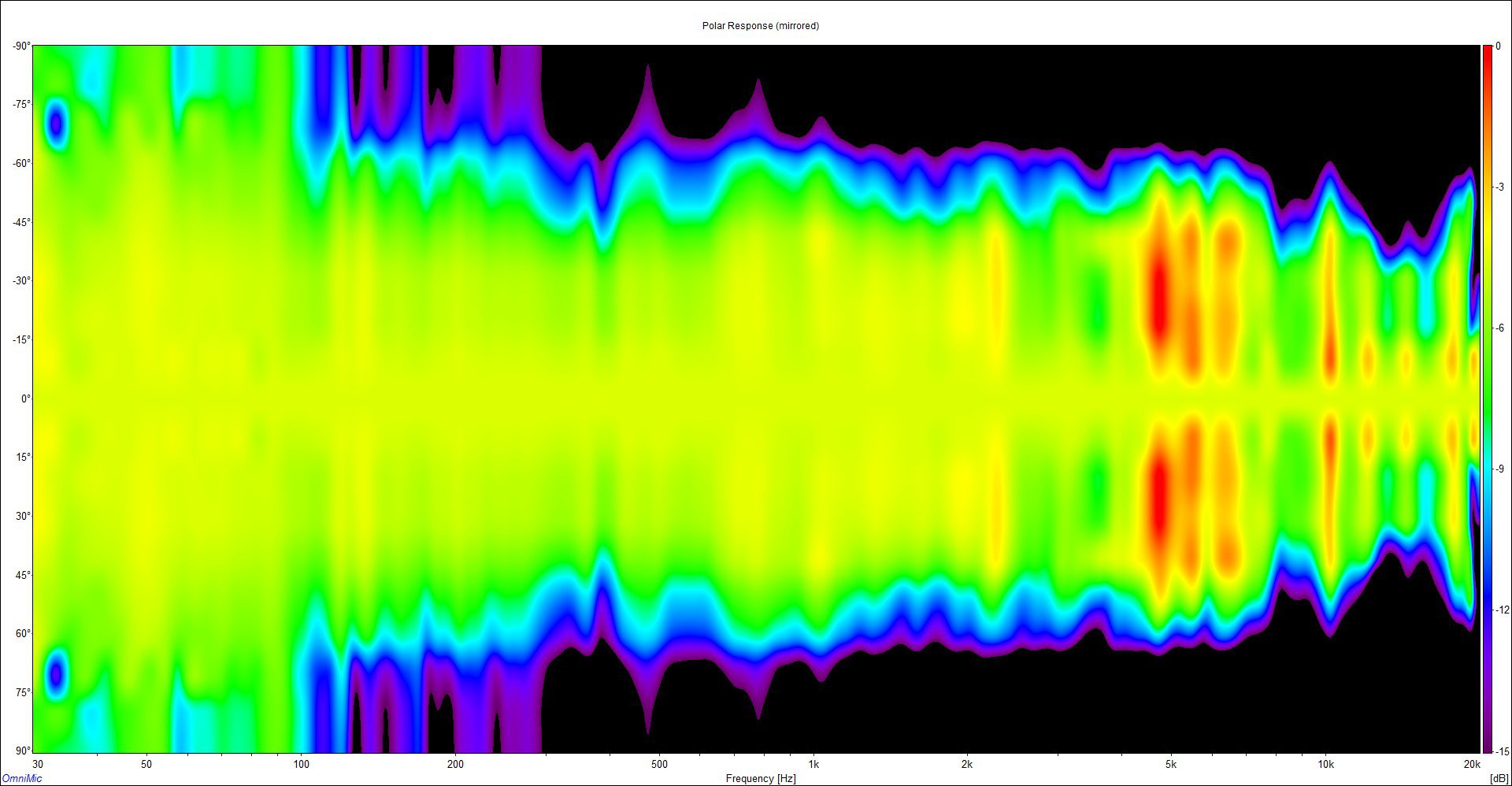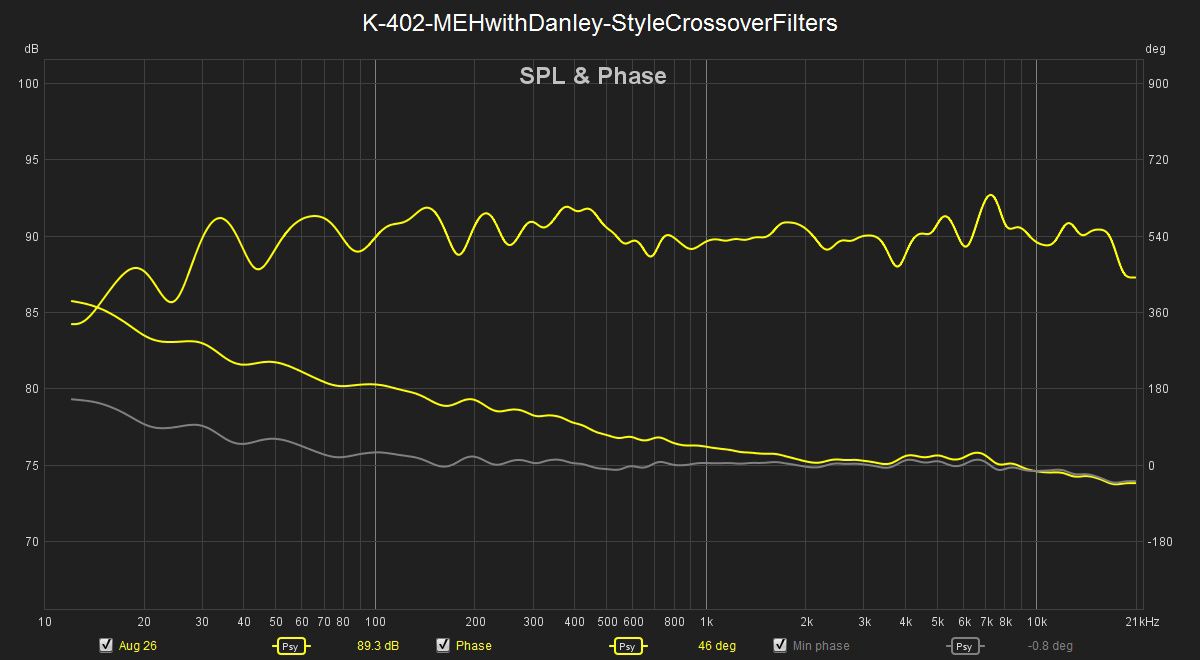Ive run Altec 604s for years and I love their sense of speed and large image size. I'm also naturally curious and I know 604s are a heritage design.
I'm wondering if you could put things "on my radar". In particular I am curious about larger horn diaphragm sizes and neo magnets. I wonder what sort of detail retrieval and low end extension I could get out of a modern horn setup. Coax or not is not necessarily important.
What's out there? B&C? TAD? What do you people use?
I'm wondering if you could put things "on my radar". In particular I am curious about larger horn diaphragm sizes and neo magnets. I wonder what sort of detail retrieval and low end extension I could get out of a modern horn setup. Coax or not is not necessarily important.
What's out there? B&C? TAD? What do you people use?
Celestion 'big red horn' (2"):
Celestion Features Big Red Horn for Axi2050 Axiperiodic Driver at Prolight+Sound 2019 | audioXpress
B&C ME464 (1.4"):
ME464 Horns - B&C Speakers
SEOS 30:
SEOS-30 – Horns by Auto-Tech
K-402 horn:
Celestion Axi2050 2" compression driver on K-402 horn and Jubilee bass bin - Page 3 - Technical/Modifications - The Klipsch Audio Community
(expensive to get from klipsch)
There is also the JBL cinema line which has some ~30" dia horns that are sometimes available:
5732 | JBL Professional Loudspeakers
Celestion Features Big Red Horn for Axi2050 Axiperiodic Driver at Prolight+Sound 2019 | audioXpress
B&C ME464 (1.4"):
ME464 Horns - B&C Speakers
SEOS 30:
SEOS-30 – Horns by Auto-Tech
K-402 horn:
Celestion Axi2050 2" compression driver on K-402 horn and Jubilee bass bin - Page 3 - Technical/Modifications - The Klipsch Audio Community
(expensive to get from klipsch)
There is also the JBL cinema line which has some ~30" dia horns that are sometimes available:
5732 | JBL Professional Loudspeakers
I was hoping to hear the Axi2050 at RMAF this year. RMAF was cancelled.
Know anyone in the Denver area that has them on large horns and allows an audition?
Know anyone in the Denver area that has them on large horns and allows an audition?
If you've heard TAD TD-4002s on a K-402 horn, that pretty much sums up what the Axi2050 sound like on the K-402, i.e., I've been listening to the TAD TD-4002s on K-402s since Sept. 2009, and I can tell very little difference between the Celestion Axi2050 and the TAD TD-4002s. The Axi2050 is the first driver that I've heard that I can say that about.
Note that I've seen no other horn that can fully take advantage of the Axi2050 driver's very broadband transfer function performance than the K-402 horn. Even the largest SEOS 30 horn isn't big enough to take advantage of the extended low end of this new Celestion Axi2050 driver. The Axi2050 can easily be crossed at 200-250 Hz using the K-402 horn and will perform spectacularly:
vs.TADTD-4002(Blue)onK-402Horn.jpg.ebd87c22c1eaf91642a13684a76dca65.jpg)
.jpg.2a6066ee21cb78914c0e706d10b535d5.jpg)
Chris
Note that I've seen no other horn that can fully take advantage of the Axi2050 driver's very broadband transfer function performance than the K-402 horn. Even the largest SEOS 30 horn isn't big enough to take advantage of the extended low end of this new Celestion Axi2050 driver. The Axi2050 can easily be crossed at 200-250 Hz using the K-402 horn and will perform spectacularly:
vs.TADTD-4002(Blue)onK-402Horn.jpg.ebd87c22c1eaf91642a13684a76dca65.jpg)
.jpg.2a6066ee21cb78914c0e706d10b535d5.jpg)
Chris
A normalized horizontal polar sonogram of the K-402-MEH with K-69-A 2" compression driver (modified P.Audio BM-D750 Series I) and two Crites 1526C 15" cast frame woofers--taken outside in January 2016:

More info here: A K-402-Based Full-Range Multiple-Entry Horn - Technical/Modifications - The Klipsch Audio Community
Chris

More info here: A K-402-Based Full-Range Multiple-Entry Horn - Technical/Modifications - The Klipsch Audio Community
Chris
I'm VERY curious about this topic too. My big request: whatever horn(s) you nominate please PUT THE DIMENSIONS. I stumbled on some other thread and they were talking about 60" wide...OK not in my one living room ha ha.
^ Sound has size that depends on the frequency and the things trying to control it needs to have some dimension too, that relates to the size of sound 😉 Be it multiple transducers or a waveguide or a baffle.
1kHz is very roughly 12" in size (as wavelength) so device to control dispersion down to 1kHz needs to be roughly same scale. 12" is not too big for home and in fact many loudspeakers have this dimension at least as height. 500Hz is double that already, 24". This is getting too big for most. But to control dispersion down to 250Hz would take about 48", let alone down to 125Hz at 96", hard to fit into a room.
There is no escape, we are limited to very big devices. Unless cut the wavelength in half and get octave of dispersion control for free! 😀 you would have to change the gas in the listening room from air to something else that has slower speed of sound to reduce the sound wavelength. If you can't breathe you could decrease temperature and pressure instead. Wikipedia says adjusting the thermostat won't cut it since it takes airplane cruising altitude to lower speed of sound just about 10%, to little below 300m/s and this is quite deadly environment already.
Just better get used to big speakers/devices and assume they are big, instead of assuming small. Small speakers are for mass market and they don't control dispersion. That is fine if you just wanna hear the music without being interested how good or bad the sound is.
1kHz is very roughly 12" in size (as wavelength) so device to control dispersion down to 1kHz needs to be roughly same scale. 12" is not too big for home and in fact many loudspeakers have this dimension at least as height. 500Hz is double that already, 24". This is getting too big for most. But to control dispersion down to 250Hz would take about 48", let alone down to 125Hz at 96", hard to fit into a room.
There is no escape, we are limited to very big devices. Unless cut the wavelength in half and get octave of dispersion control for free! 😀 you would have to change the gas in the listening room from air to something else that has slower speed of sound to reduce the sound wavelength. If you can't breathe you could decrease temperature and pressure instead. Wikipedia says adjusting the thermostat won't cut it since it takes airplane cruising altitude to lower speed of sound just about 10%, to little below 300m/s and this is quite deadly environment already.
Just better get used to big speakers/devices and assume they are big, instead of assuming small. Small speakers are for mass market and they don't control dispersion. That is fine if you just wanna hear the music without being interested how good or bad the sound is.
Last edited:
I'm VERY curious about this topic too. My big request: whatever horn(s) you nominate please PUT THE DIMENSIONS.
The K-402 is about 1m wide, 2 feet tall and half a metre deep, whereas the JBL 2392 is 44" x 44" x 30" (from official CAD data). The K-402 doesn't appear to have a slot and the 2" driver used is P-Audio BM-D750, which is an easily available part. However, the JBL has a 3" throat and that may require some adapter and plumbing if 2" drivers are to be used.
The JBL 2352 is a much smaller horn (22"x18") operable from 630Hz. It also has a standard 1.5" throat that could accept several compression drivers from several manufacturers without much adjustment.
Last edited:
Just better get used to big speakers/devices and assume they are big, instead of assuming small. Small speakers are for mass market and they don't control dispersion. That is fine if you just wanna hear the music without being interested how good or bad the sound is.
That is simply not true
...as the membrane at the tymphanum to produce a stimulus just need to move by 1 angstrom
For sure, but to restrict the propagation of the stimulus to a direction, or cancel it out with another stimulus in opposite phase to that direction, and you'll end up calculating with wavelengths. And there is no other ways to do it that I know of, guide away or cancel out one way or another.
I was sure that when talking about 'ear' and 'stimulus', those terms went together and indicate a precise mean. Propagation after the stimulus is electrical  ( so they say
( so they say  )
)
 ( so they say
( so they say  )
)Alright, usage of correct terminology is always advisable 😀
To add some content, there is possibility to design, simulate and fabricate any size waveguide yourself if there is no fit commercial offerings available. See thread Acoustic Horn Design – The Easy Way (Ath4)
To add some content, there is possibility to design, simulate and fabricate any size waveguide yourself if there is no fit commercial offerings available. See thread Acoustic Horn Design – The Easy Way (Ath4)
Last edited:
^ Yes I did some months ago, works by cancellation. Cardioid box is very small in size comparison to waveguides for same wavelengths but can't go very high DI, basically nominal pattern is > 90 degrees which is very useful to cancel sound to a particular direction like towards front and side wall depending on toe in for example. But not very useful to cancel sound to directions that are towards listening position like floor and ceiling. Preventing sound to directions that are towards listening position would require two sound sources (to mimic single very big one) or big waveguide, both construct size depends on the wavelengths.
Last edited:
Without the mouth flange (which is not needed), the K-402 is 35.5" wide x 21" high x 16.5" deep (90 x 53 x 42 cm).
One gentleman from Melbourne made a pair from scratch a few years ago and placed them in his listening room on top of a pair of Yamaha S250B (15 inch) ported bass bins:

Note that the full-range K-402-MEH eliminates the need for bass boxes.
I do recommend DSP crossover and bi-amping (something like an Axi2050) or tri-amping (dual diaphragm compression driver like a BMS 4592ND--as I currently run my K-402-MEH).

Chris
One gentleman from Melbourne made a pair from scratch a few years ago and placed them in his listening room on top of a pair of Yamaha S250B (15 inch) ported bass bins:
Note that the full-range K-402-MEH eliminates the need for bass boxes.
I do recommend DSP crossover and bi-amping (something like an Axi2050) or tri-amping (dual diaphragm compression driver like a BMS 4592ND--as I currently run my K-402-MEH).

Chris
Last edited:
If you can call a waveguide for a compression driver "a horn", there are many choices, something like JBL M2. If not, I would guess Kinoshita/TAD style biradial would be the most popular large horn today. WE probably may call it a 604 of the large format horn, because 604/UREI in recording studios were replaced with Kinoshita/TAD.
Anyone have any feedback on someone who's actually used the Celestion Big Red Horn with their Axi 2050, and who is actually selling them and what is the current MSRP?
Thanks
Thanks
- Home
- Loudspeakers
- Multi-Way
- Modern large format horns: what's out there?